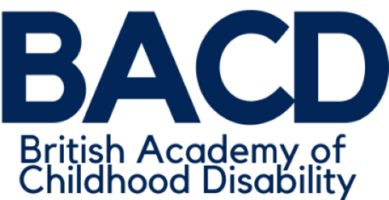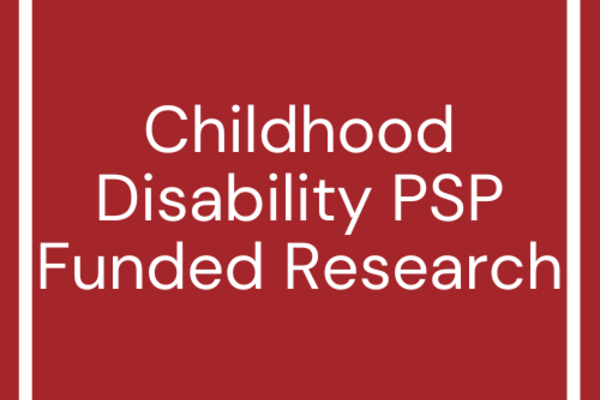Priority 1: Does the timing and intensity of therapies (e.g. physical, occupational and speech and language therapy, ‘early intervention’, providing information etc.) alter the effectiveness of therapies for infants and young children with neurodisability, including those without specific diagnosis? What is the appropriate age of onset / strategies / dosage / direction of therapy interventions?
- SPELL Trial - Clinical effectiveness of a child-specific dynamic stretching exercise programme, compared to usual care, for ambulant children with spastic cerebral palsy This study aims to assess whether an exercise programme to stretch the muscles of children with cerebral palsy is better than their usual NHS physiotherapy treatment (in progress)
- ROBUST Trial - Clinical effectiveness of an adolescent-specific strengthening programme, compared to usual care, for ambulant adolescents with spastic cerebral palsy The aim of this study is to assess if an exercise programme to strengthen the muscles of young people with cerebral palsy is better than their usual physiotherapy treatment (in progress)
- INTERACT Trial - Intensive Interaction for children and young people with profound and multiple learning disabilities Intensive Interaction involves the child's caregiver (at their educational setting or at home) becoming well-tuned to the child or young person in their care so that they can respond to subtle behaviours and forms of communication. It is recommended by speech and language therapists (SLTs) for children with profound and multiple learning disabilities. However, there is no reliable research to show if Intersive Interaction improves children's communication. This study aims to find out if Intensive Interaction improves communication for children and young people (aged 3-25 years) with profound and multiple learning disabilities (in progress)
- Therapy interventions for children with neurodisability: a scoping study of current practice and perceived research needs Families and professionals agree that there needs to be more research on therapy interventions (physiotherapy, occupational therapy and speech and language therapy) for children with neurodisabilities. To aid decisions about what, or whether, to fund research on this topic, the National Institute for Health and Care Research commissioned a small scoping study (Jan 2018)
Priority 2: To improve communication for children and young people with neurodisability
- what is the best way to select the most appropriate communication strategies?
- how to encourage staff/carers to use these strategies to enable communication?
- Identifying appropriate symbol communication aids for children who are non-speaking: enhancing clinical decision making It’s a challenge to identify suitable communication aids and language representation systems for each child, and getting it right means that long-term successful use is much more likely. This team of researchers explored current provision of symbol communication aids in order to provide guidance to support clinicians, parents and others in their selection of the most appropriate aids (Nov 2020)
Priority 4: Does appropriate provision of wheelchairs to enable independent mobility for very young children improve their self-efficacy?
- Cost-effectiveness of earlier provision of powered wheelchair interventions for children with mobility limitations: evidence synthesis and economic model This project will estimate the costs and benefits of providing very young disabled children (under 5 years) with powered mobility aids (e.g. mini wheelchairs, ride-on-cars). To do this the team will combine the results of existing research and use a technique called economic modelling to predict how cost-effective it is to provide powered mobility aids from a very early age. More than 70,000 children in the UK use special equipment, such as wheelchairs, to help them move around. Helping children under the age of 5 to move around on their own can have long-lasting benefits, including physical and mental development, increased independence and more participation in everyday life. These benefits can also have positive impacts on the physical and mental health of children's parents, and may reduce later health, social care and education costs. What is currently unknown is whether providing powered mobility aids for very young children provides more benefits than waiting until after the child is aged 5 (Oct 2020)
Priority 7: Does a structured training programme, medicines and/or surgery speed up the achievement of continence (either/or faecal or urinary) for children and young people with neurodisability?
ICoN - Improving continence in children and young people with neurodisability: survey of current NHS practice and systematic review of effectiveness, cost-effectiveness and contextual factors that modify implementation of interventions Learning to manage going to the toilet independently is an important milestone in growing up. Children with special educational needs and disabilities may be slower to learn to manage going to the toilet, or they may need extra help. Many children with special educational needs and disabilities can become continent with training. Various things can influence if and when toilet training starts. A key issue is whether families and professionals think a child is ready and able to begin toilet training. Interventions that professionals recommend to improve continence include toilet training programmes, nappies and other products, aids and equipment, medicines and surgery. This study describes the variety of current practice in the NHS and summarise the evidence available for interventions (Dec 2021)
Priority 10: What is the long term safety, effectiveness and sustainability of behavioural strategies and/or drugs (e.g. melatonin) to manage sleep disturbance in children and young people with neurodisability (outcomes include time to onset, duration, and reducing impact on family)?
- Pharmacological and non-pharmacological interventions for non-respiratory sleep disturbances in children with neurodevelopmental disorders: a systematic review Bryony Beresford and her team brought together the evidence which already exists from lots of previous studies about sleep disturbance, to determine how well different treatments work. The review showed that it was not possible to draw conclusions about the effectiveness of non-pharmacological interventions for managing sleep disturbance and although there was some benefit with melatonin, the degree of benefit is uncertain (Oct 2018)
Priority 13: Are sensory processing/integration therapeutic programmes effective in improving behaviour and/or increasing play/participation for children and young people with neurodisability?
- SenITA - A pragmatic Randomised Controlled Trial of Sensory Integration Therapy versus usual care for sensory processing difficulties in Autism Spectrum Disorder in children: impact on behavioural difficulties, adaptive skills and socialisation Autism Spectrum Disorder is a common lifelong condition affecting 1 in 100 people. A team based at Cardiff University is investigating whether Sensory Integration Therapy, provided by trained occupational therapists, improves a child’s behaviour, socialisation and daily functioning, compared with the usual care they’d receive (Jun 2022)
Priority 14: Are behavioural and sensory interventions (e.g. early intensive behavioural intervention, EarlyBird, encouraging socialisation with peers etc.) effective in managing symptoms of Autistic Spectrum Disorder?
- Intensive behavioural interventions for young children with autism: A systematic review and cost-effectiveness analysis Autism is a complex life-long condition that impacts on development in different areas including intellectual, communication, social, emotional, and adaptive skills for daily living. The proportion of children diagnosed with autism has increased considerably over the last two decades, and it now affects approximately 3 in 200 children born in the UK. This study aims to find out whether or not intensive early interventions based on applied behaviour analysis (ABA) can help young children with autism, and whether it represents good value for money (Jul 2020)
- Clinical and cost effectiveness of a parent mediated intervention to reduce challenging behaviour in pre-schoolers with moderate to severe learning disability: a randomised controlled trial About 1-2% of the population have a Learning (also called intellectual) Disability (LD). This is a lifelong condition characterised by an IQ less than 70, general developmental delay and limitations in day to day activities. There is significant evidence from research in the general population that parenting groups which support parents in developing skills to manage challenging behaviours such as temper tantrums, aggression or self injury in their child can be helpful. These programmes, if offered to parents early on, may reduce and even prevent serious emotional problems and possible criminality from developing in the child later in life. This study team will evaluate a programme called level 4 Stepping Stones Triple P (SSTP) delivered by trained practitioners to groups of parents of young children aged 30-59 months with moderate to severe LD (Jan 2024)
Priority 20: Are oro-motor treatment strategies (e.g. oral motor exercises, sensory stimulation, sensorimotor activities etc.) effective to improve eating and drinking or speech for children and young people with neurodisability? Are there identifiable subgroups that benefit more from the strategies?
- What interventions, which could be delivered at home by parents, are available to improve eating in young people with neurodisability and are suitable for investigation in pragmatic trials? Young children with developmental difficulties may also have eating, drinking and swallowing problems. Eating and drinking difficulties may lead to a restricted diet, poor growth, and impact on development, in addition to general physical health risks such as choking or chest infections. This research team wants to find out what treatments are currently recommended by health professionals. They will then decide which of these potentially useful treatments should be tested in a future study (Mar 2021)



